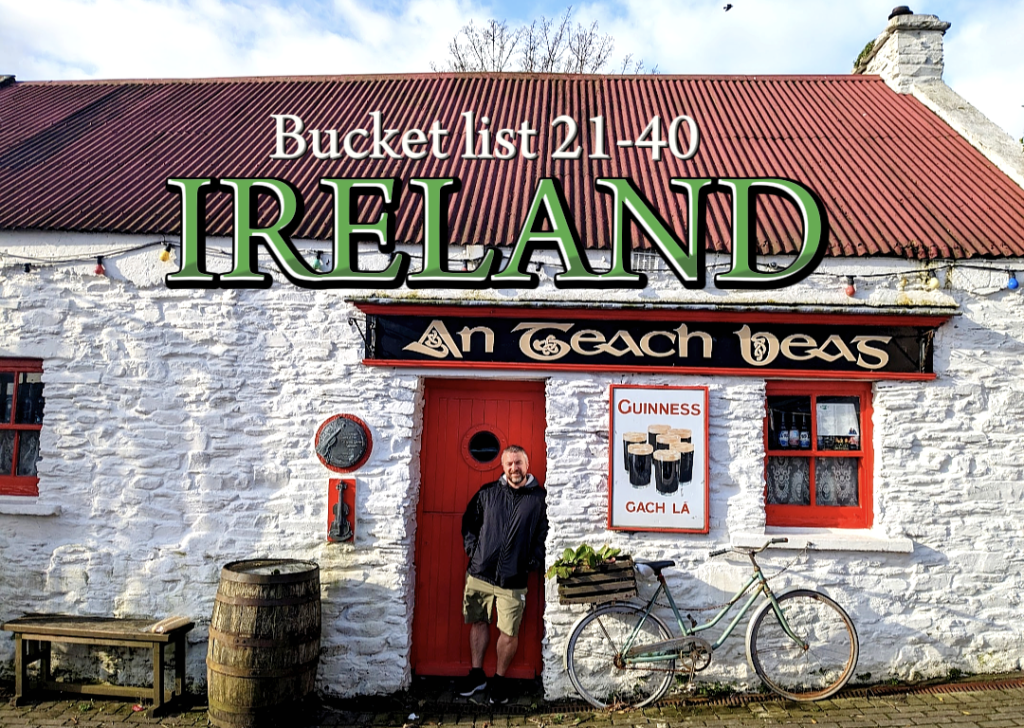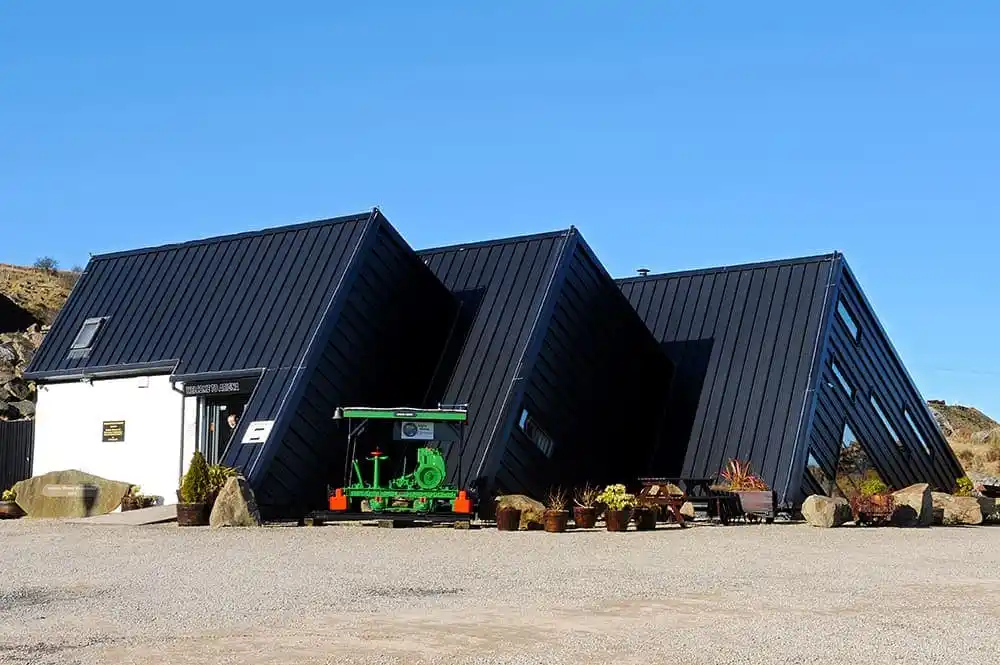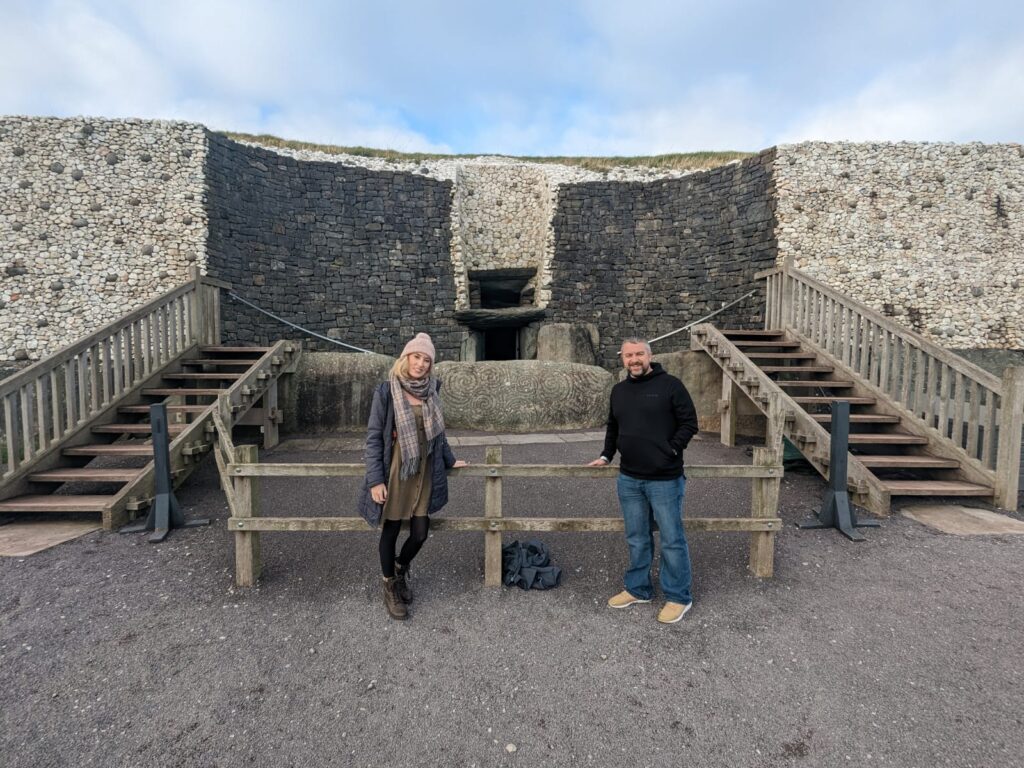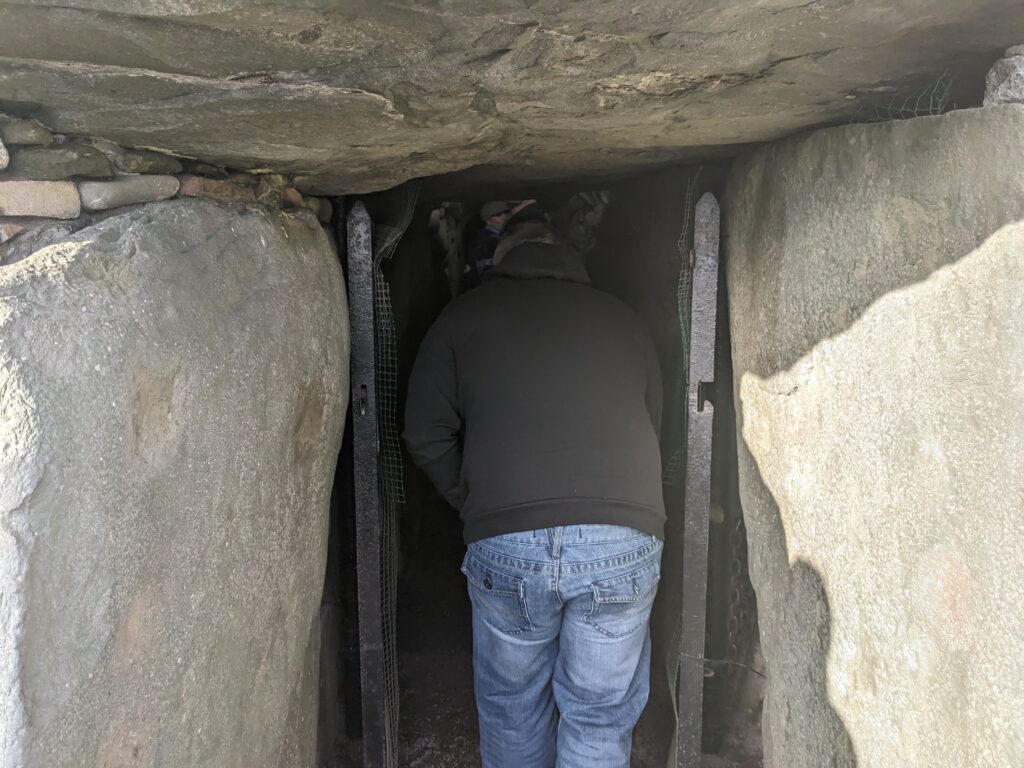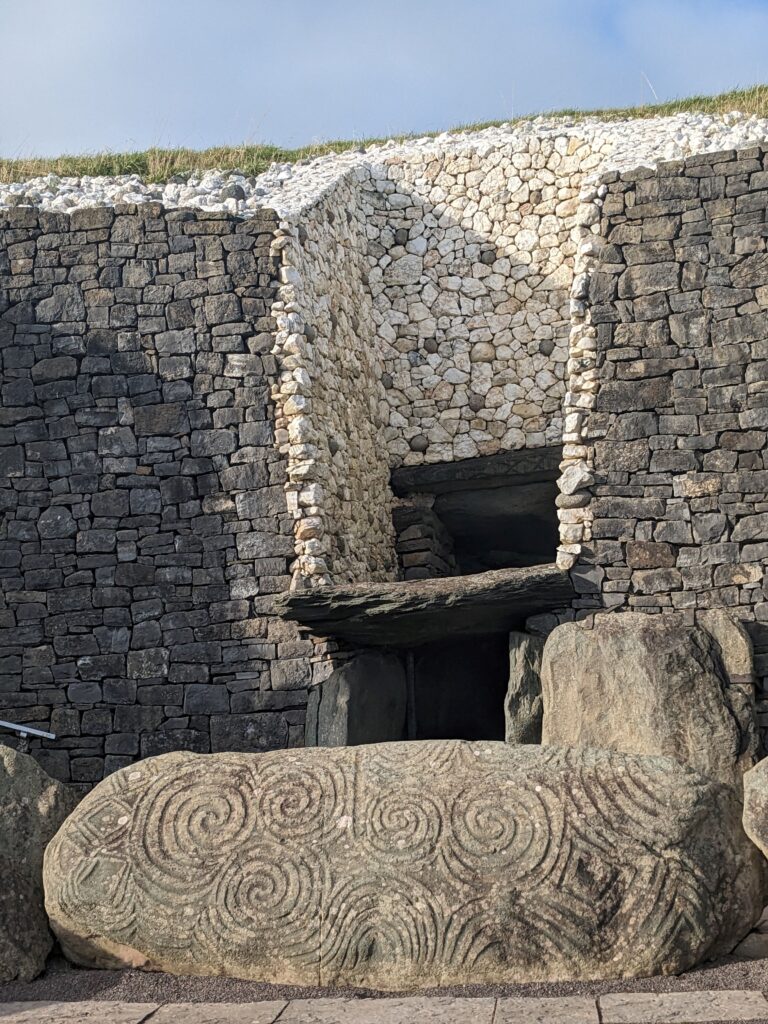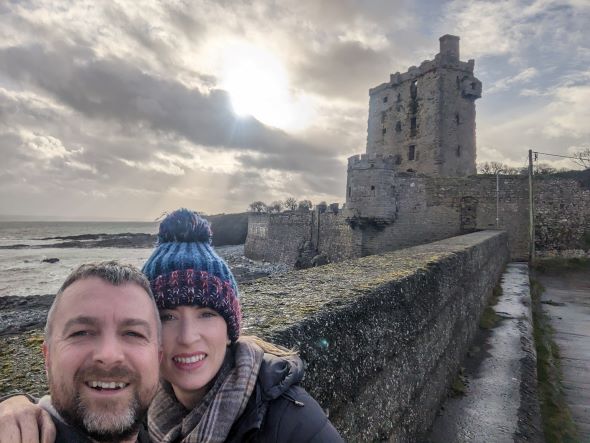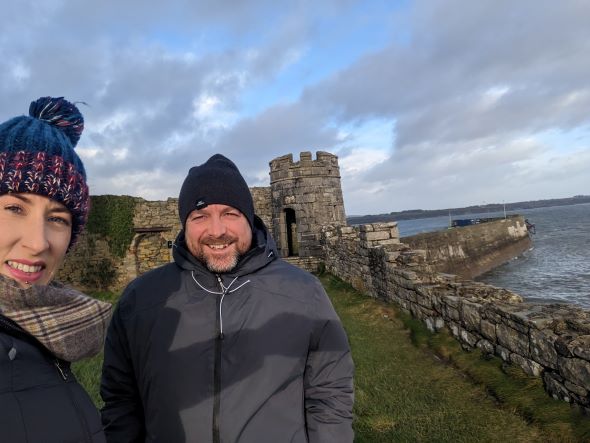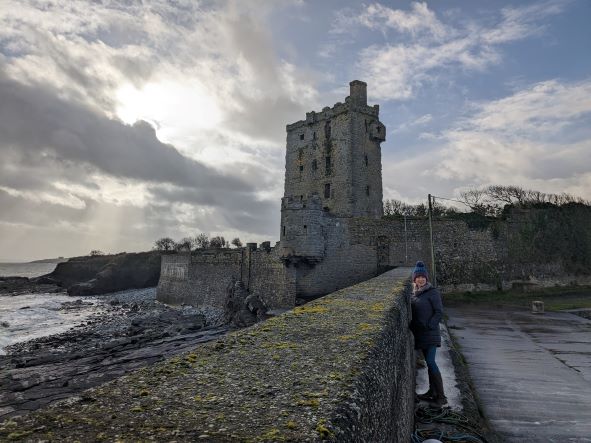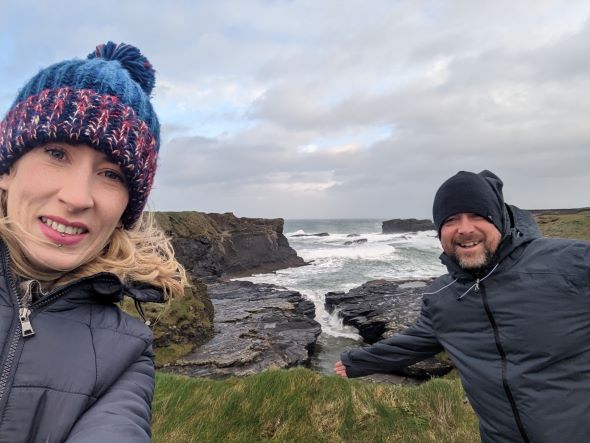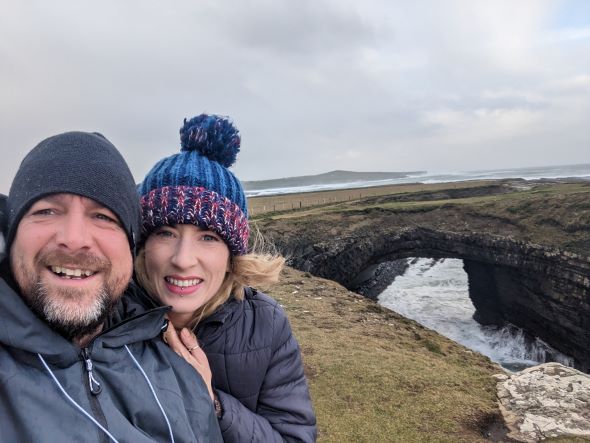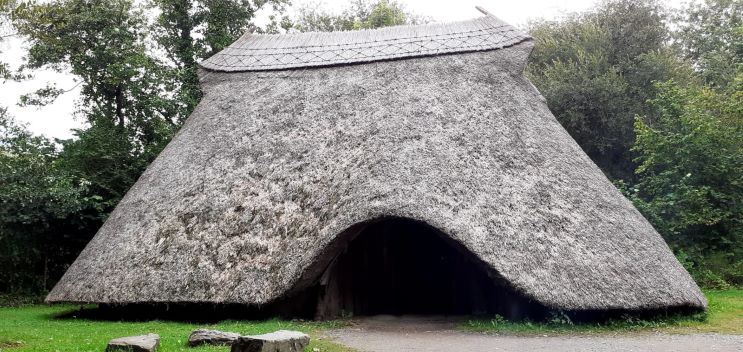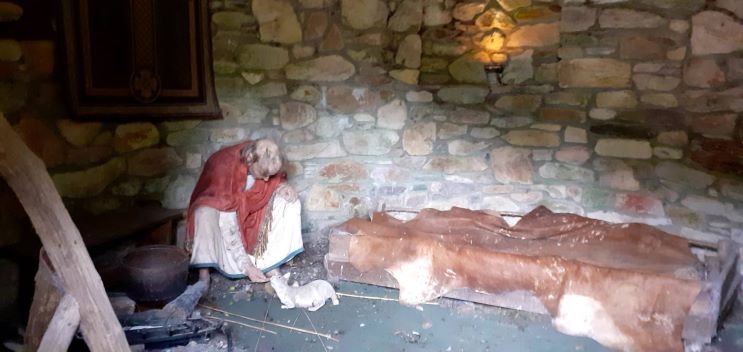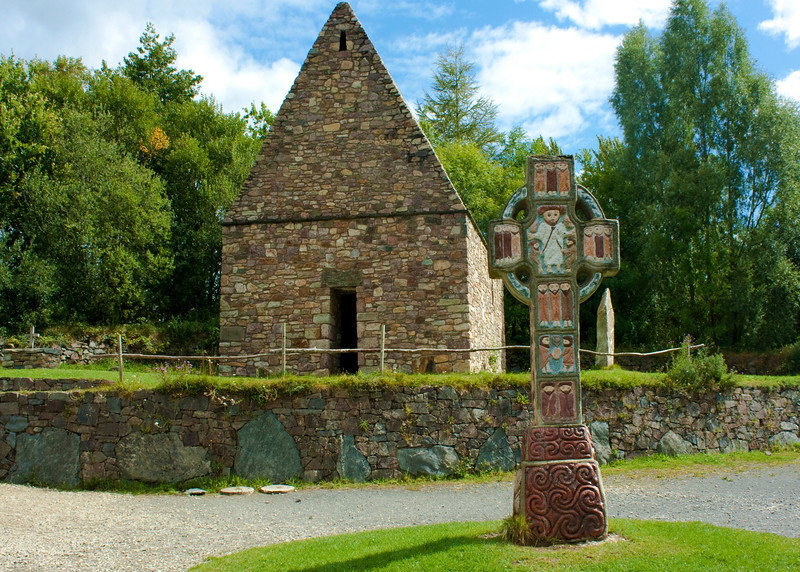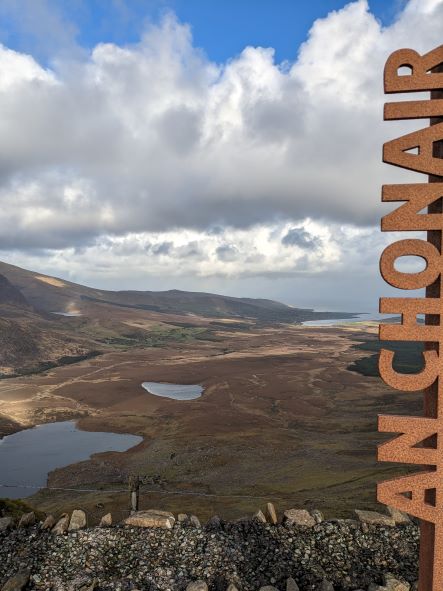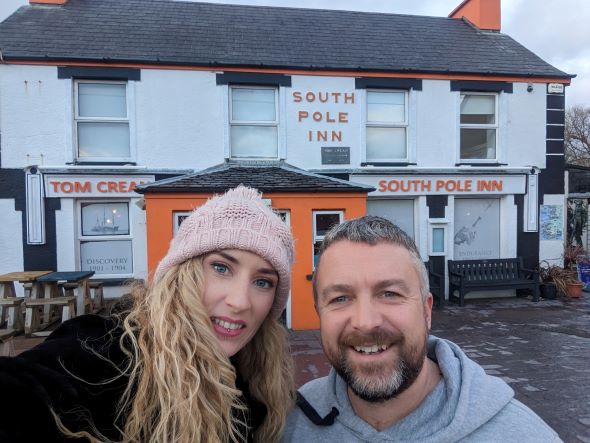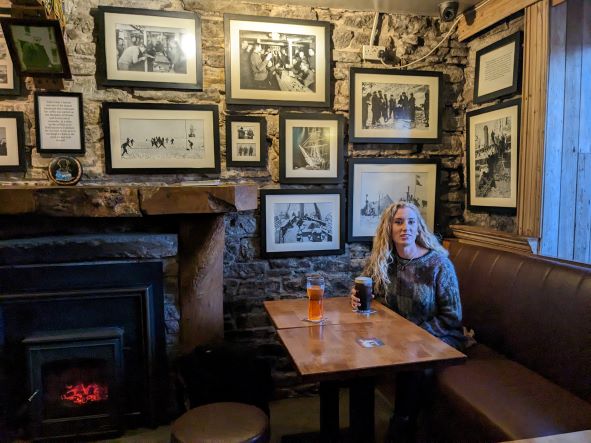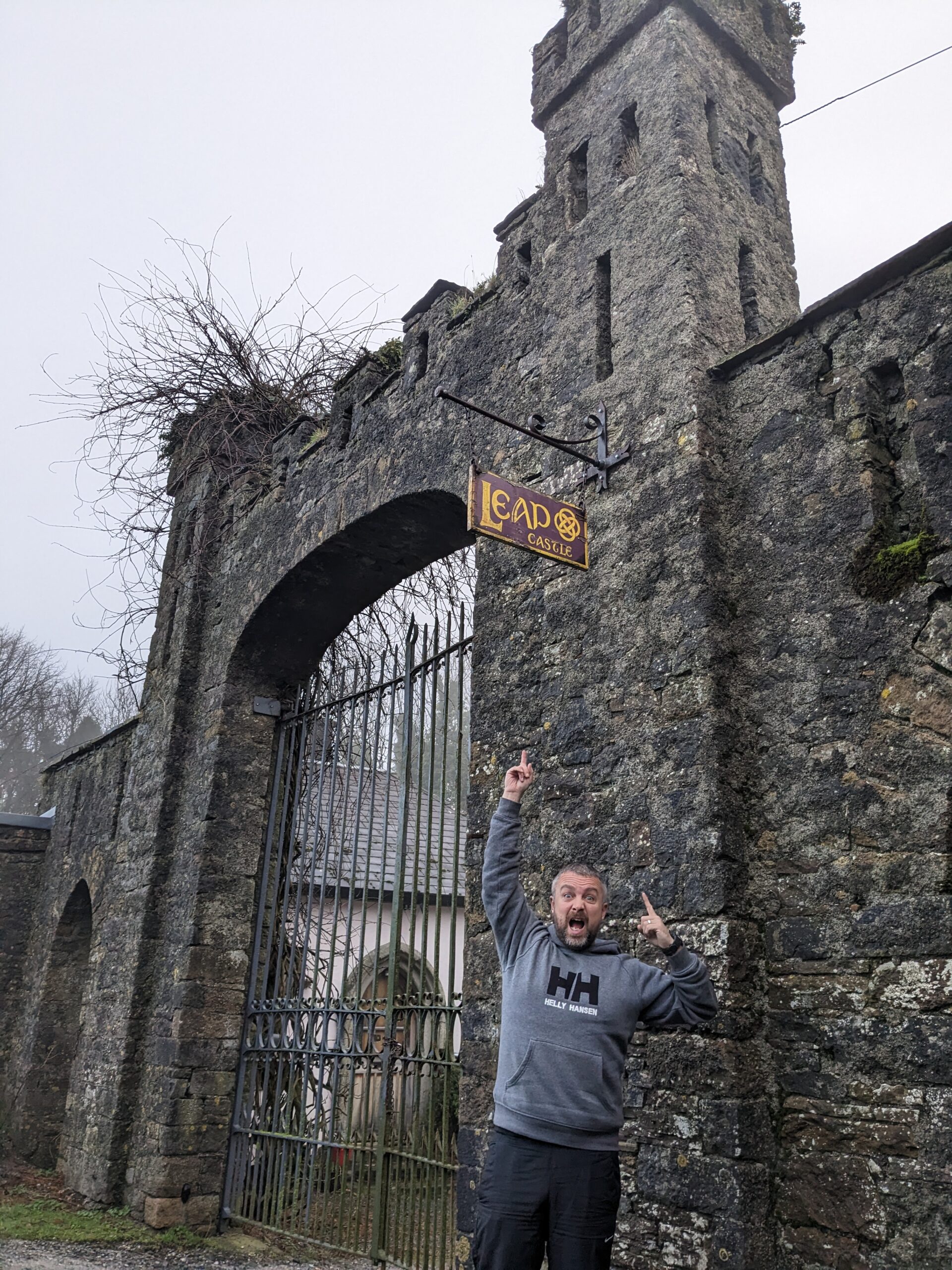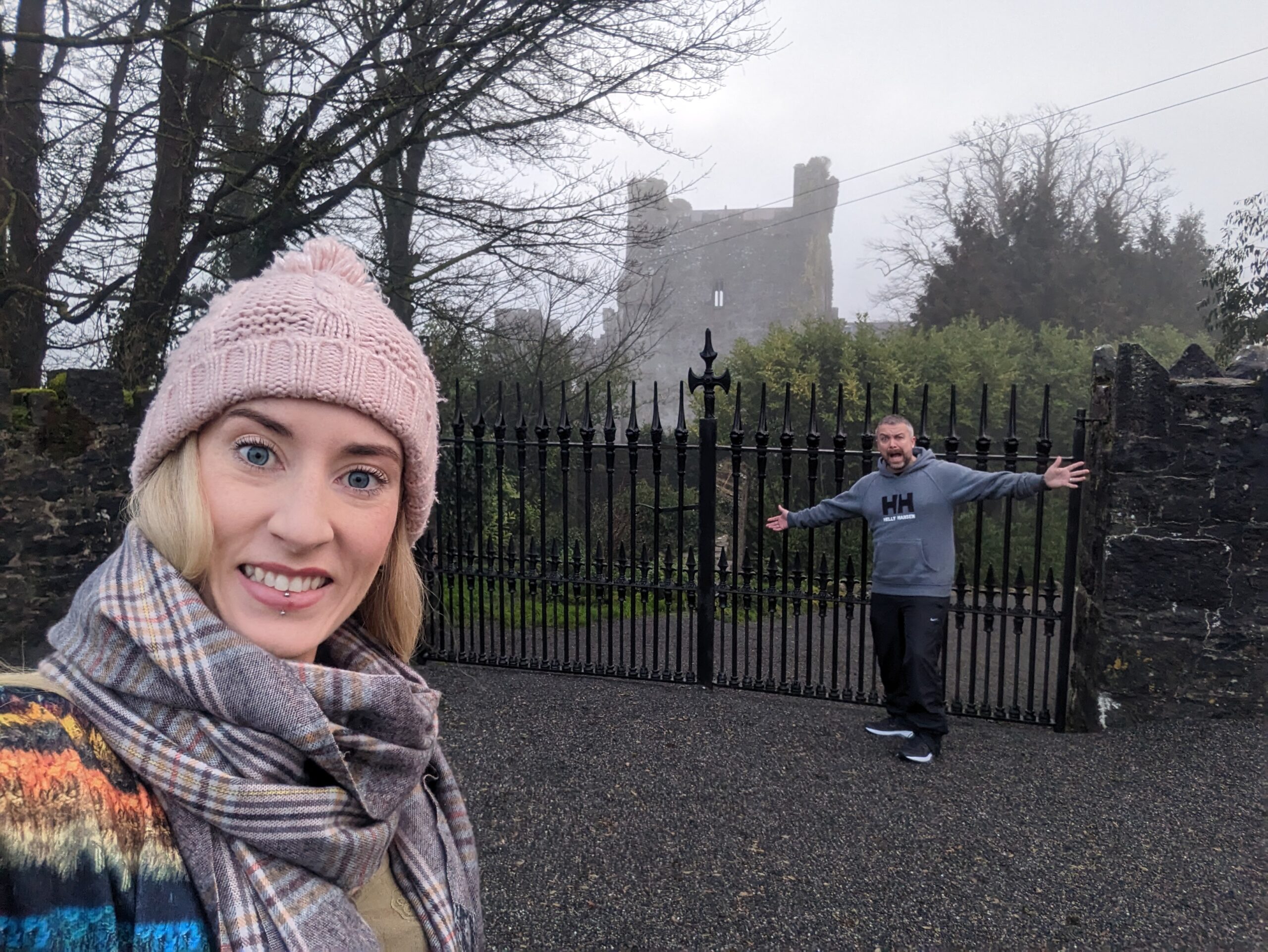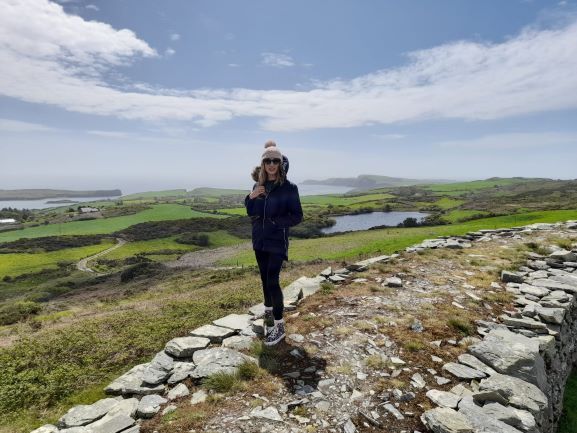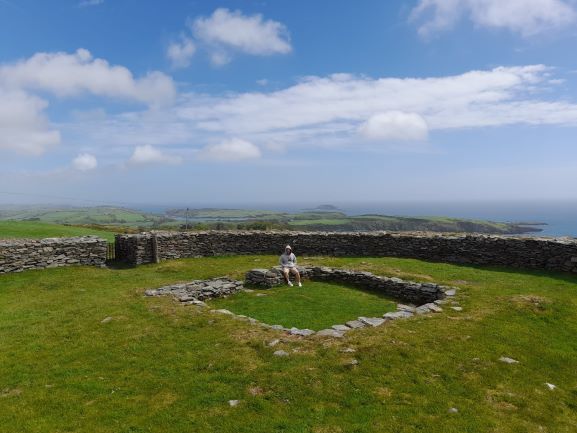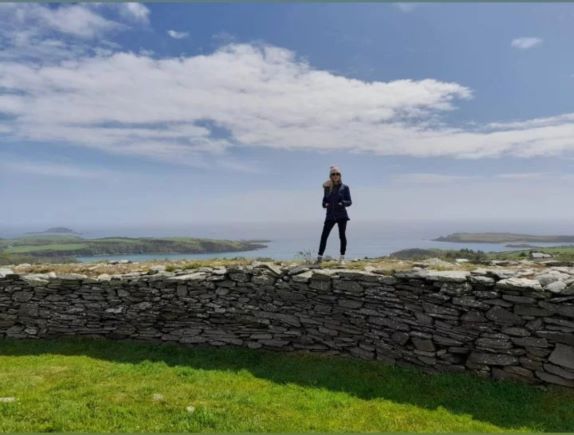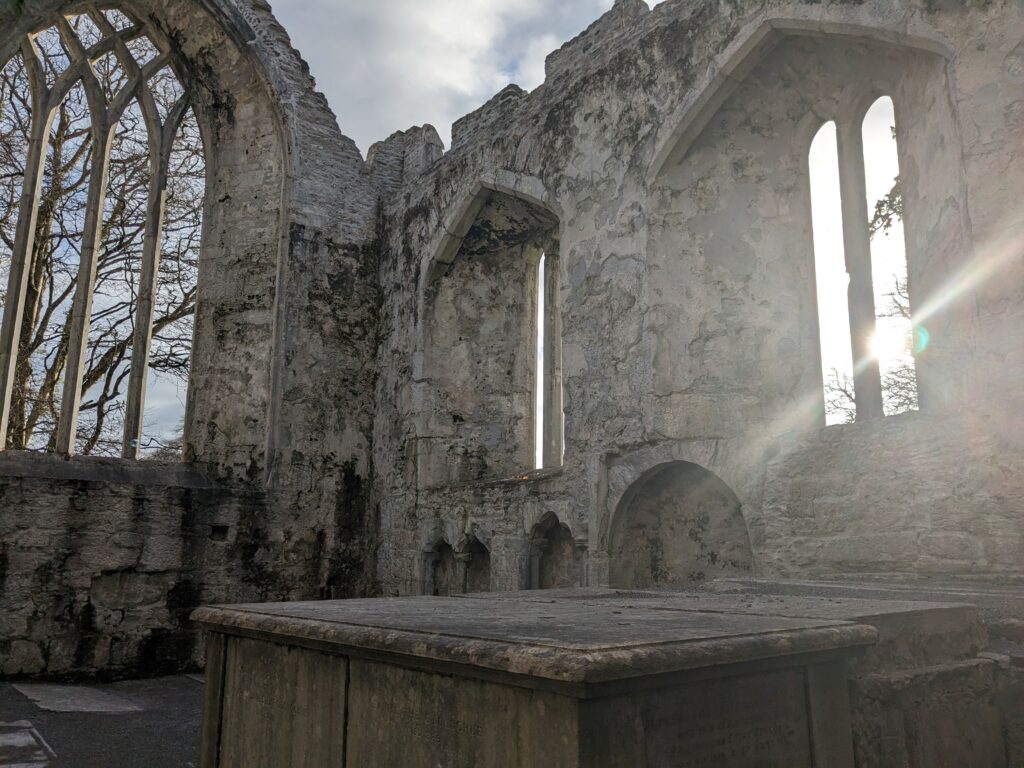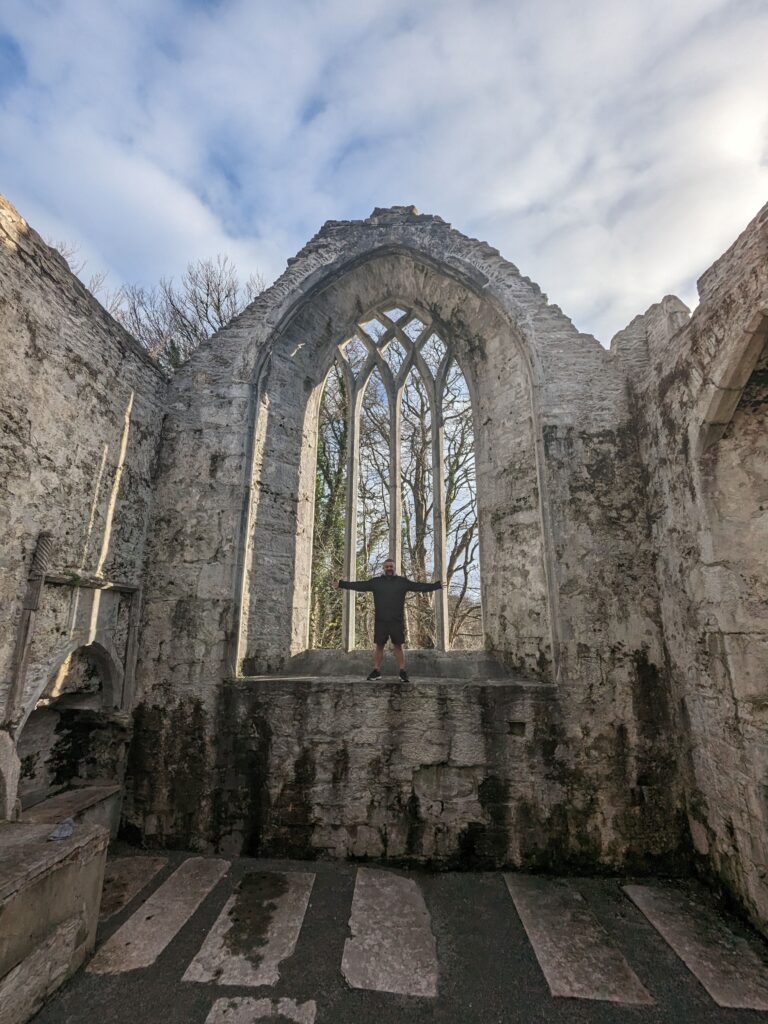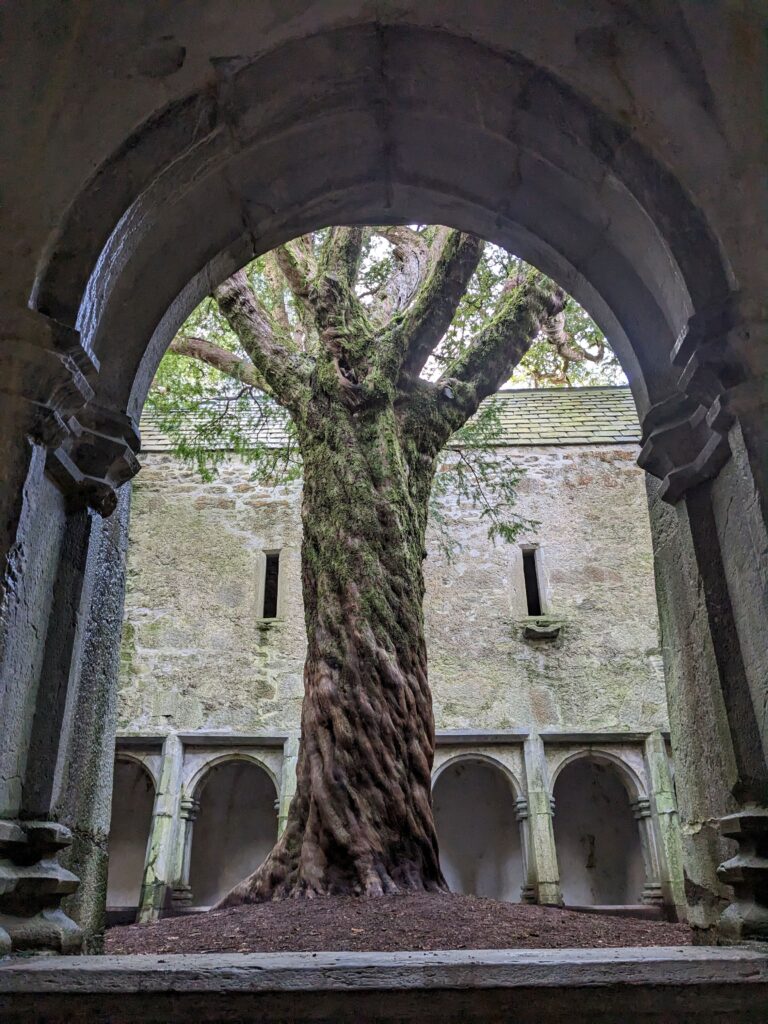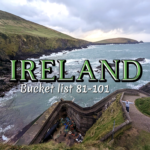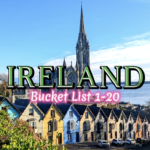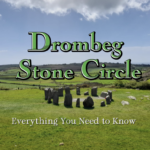Last updated on March 16th, 2025 at 12:53 pm
Welcome back to our list of 101 famous Ireland landmarks, put together by ACTUAL Irish people!
If you haven’t caught up with the first 20 of our Ireland landmarks you can find them below.
Famous Ireland Landmarks
Consider ticking these best Irish attractions off your Ireland bucket list on the ultimate 2-week Ireland road-trip.
Now, let us waste no time and get straight into our ultimate list of famous Ireland landmarks.
*Our list of The Greatest Landmarks in Ireland is presented in a random order.
21. Kilmainham Gaol – County Dublin
Not too many happy stories come out of jails, but Kilmainham Gaol in Dublin has an extra bit of sadness as it was there the 1916 Easter Rising leaders were executed by British forces.
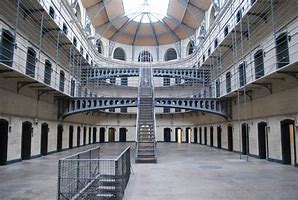
Today you can see the location where those brave men took their last breath in the cause of Irish freedom before being shot by firing squads.
This famous Irish prison has held thousands of men, women, and even children. Many of these were held for petty crimes in horrendous conditions.
Ireland’s many struggles for independence also brought numerous political leaders here for unwanted stays. Some of these include Countess Markievicz, Robert Emmet, and James Connolly.
Kilmainham Gaol was also used as the film location for the true story of “The Guildford Four and Maguire Seven” – In the Name of the Father.
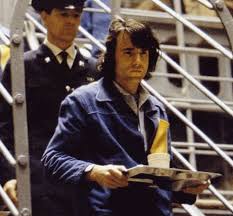
- In Dublin, you can get a hop-on-hop-off bus to all the famous sights in Dublin City.
- Save time and money and purchase your Dublin Day Pass. This pass gets you easily around the city and includes entries to 40+ of Dublin’s main attractions, it doesn’t get better than that! This pass is valid for up to 5 days!
22. Slievemore Deserted Village – County Mayo
A famous Ireland landmark on Achill Island is the deserted village of Slievemore. This is an attraction for dark tourism in Ireland. The deserted village contains structures of around 80 – 100 abandoned houses.
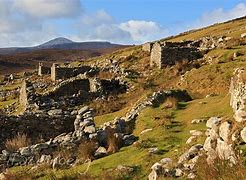
It is believed that Slievemore Village was built in the 1700s and was abandoned by its occupants during The Great Famine that lasted from 1845 to 1852.
Now you can visit the village and walk around freely. Slievemore Village remains a symbol of how hard this part of Ireland was hit by the Great Famine which caused millions of Irish to leave their beloved nation.
- From Dublin, enjoy Ireland’s North Atlantic Coast on this 5-day tour.
23. The Gobbins Cliff Path – County Antrim
A unique way to discover the rugged coast of Antrim is the Gobbins Cliff Path. This 3.2-kilometer hike brings you along bridges, tunnels, and caves and can take two to three hours to complete.
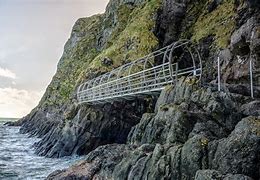
Originally built in 1902 it was shut down in the 50s but was renovated and reopened in 2015 to thrill seekers’ delight making it a famous Ireland landmark and attraction.
The Gobbins Cliff Path is a guided tour and kids under 4 feet are not allowed, safety gear is also provided to the explorers.
Tickets cost only 20 pounds and it is best advised to book in advance in the summer months. We visited in January and unfortunately, it was closed for low season.
24. Arigna Mining Experience – County Roscommon
For nearly 300 years coal was mined in the Arigna Valley in County Roscommon until 1990 when the Arigna Mine got shut down. Luckily in 2003, the Arigna Mine was reopened as a tourist attraction.
Now former miners are going back down, but this time as tourist guides instead of miners.
Learn about the hardship, dark cramped areas, and lack of safety which these men used to work every day. Tickets for adults only cost 13 euros for a very unique experience.
Check out Instagram to find out where in the world we are these days!
25. Brownshill Dolmen – County Carlow
Our next famous Ireland landmark is an ancient megalithic site. Built between 4000 and 3000 BC and weighing an impressive 150 tons, Brownsville Dolmen is Europe’s biggest and heaviest Dolmen.
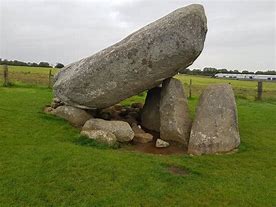
Only 3 kilometres outside of Carlow Town, the Brownshill Dolmen is a popular Ireland landmark that is free to visit.
26. Brú na Bóinne – County Meath
One of two UNESCO World Heritage Sites in Ireland and older than the Giza Pyramids and Stonehenge is the Bru Na Boinne Complex.
Newgrange, Knowth, and Dowth are three megalithic passage tombs that altogether make up the Brú na Bóinne Complex (Valley of the Boyne). As well as the three famous Ireland landmarks, there are also approximately 90 additional monuments in the area.
Built around 3200 BC (nearly 700 years before the Giza Pyramids!) these huge structures were built with vast knowledge of astronomy.

This shows particularly in The Newgrange Tomb when on the morning of the winter solstice a beam of light shines through the passage illuminating the entire chamber inside.
How they managed to construct the chamber back then without any of today’s technology is mind-boggling!
*Newgrange can be booked out months ahead, so it is highly advised to book tickets in advance.
If you are interested in ancient Ireland landmarks then make sure to check out Ireland’s 10 Best Megalithic Sites.
27. Loophead Drive – County Clare
Rough, turbulent Atlantic Ocean swells and waves, steep cliffs, and beautiful scenery make up the Loop Head Drive in Clare.
Start at Doolin and make your way down to a natural sea arch – “The Bridges of Ross”. You will be doing well if you find any other nearby bridges as today only one “bridge” remains standing.
Drive on to take in the views at Loophead Lighthouse and from there continue in an anti-clockwise direction to the informative and historical Carrigaholt Castle. All these Ireland landmarks are free to visit.
28. Croagh Patrick – County Mayo
The most famous Irish pilgrimage site is Croagh Patrick. Nicknamed “The Reek” and stands at 764 meters.
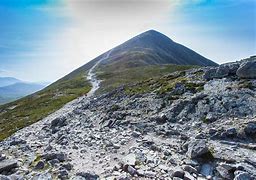
Each year on the last Sunday of July thousands of people hike Croagh Patrick to attend a once-a-year mass which is held at the tiny church at the top.
Lots of these hikers do this barefoot!! These hikers are either hard as nails or completely bonkers.
The mountain which means Patrick’s Stack, is named after Saint Patrick who is believed to have fastened for 40 days at the summit.
On the way up you will be able to see magnificent views of what looks like hundreds of islands in the bay. Just make sure you do it on a clear day!
29. Irish National Heritage Park – County Wexford
Everywhere you go in Ireland you will see some form of history of different periods in Ireland.
To learn what exactly you are looking at and when it was built, a visit to The Irish National Heritage Park is strongly recommended. You do not have to be a history enthusiast to enjoy this park!
Travel back in time in the open-air museum which tells the story of Irish human settlement through 16 reconstructed sites.
Starting at the Stone Age days and going right up to the Norman invasion period. Learn what the inside of a ring fort looked like, or how life was lived in Viking Settlements. This is one of the most fun Ireland landmarks to visit.
An adult ticket for a truly knowledgeable and amusing encounter will cost you only 12.50 Euros.
30. Dingle – County Kerry
The road trip to Dingle is an activity in itself and is high on our list of famous Ireland landmarks.
The best way to get to Dingle is by taking the stunning Conor Pass which offers spectacular views of the area.
Then when you leave Dingle, take the main road out for more scenic views, but make sure to stop at the South Pole Inn in Annascaul .
The South Pole Inn pub was owned by famous Irish Antarctic explorer Tom Crean (and made even more famous by the Guinness advert)
Once you are in the charming and colourful Dingle you will find lots of brilliant Irish pubs with friendly locals to enjoy many pints of Guinness.
Inch Beach is only a 20-minute drive from Dingle.
Before you visit this famous Irish Pub make sure to read all about Irish pub etiquette.
31. Connemara National Park – County Galway
Located only one hour away from Galway City you will find one of six of Irelands National Parks – Connemara National Park.
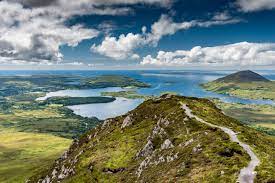
The Diamond Hill Loop walk is the most famous hike in Connemara National Park, with stunning views of the Atlantic Ocean.
If you don’t fancy hiking then stay in your car, bring lots of snacks and cruise around the massive park for the day in one of Ireland’s nicest road trips.
- From Dublin, book your Connemara National Park full-day tour.
- From Galway, book your Connemara National Park full-day tour.
32. The English Market – County Cork
In the heart of Cork City, you will find the iconic English market which has been selling produce since 1788.
One of the oldest and best-covered markets in Europe, it has survived famine, flood, war, fires, and multiple recessions to remain a strong part of Cork’s retail environment.

Inside the gorgeous building, you will find lots of Cork’s finest market traders who are always up for a giggle and a bit of craic!
- From Cork, book your Guided Historical Walking Tour.
Check out the top 5 towns to visit in County Cork – we are talking Ireland picture perfect postcard towns!
33. Military Museum and Park – Meath
Randomly in the middle of County Meath, you can visit a military museum that has a very large and impressive collection of items, including vehicles, weaponry, and equipment.

The memorabilia on display ranges from the Napoleonic Wars, the American Civil War, the 1916 Irish Revolution, World Wars One and Two, Vietnam, and the Gulf Wars.
Tickets cost only 10 euros.
34. Leap Castle – County Offaly
Known as Ireland’s most haunted castle is Leap Castle.
Over the centuries many dramatic stories have occurred here, which include gruesome murders, horrific accidents, and trap doors with spikes at the bottom for unwanted guests!
These days the owners share the castle with many ghosts, some of which have been there for centuries. The spooky castle can be visited upon request by contacting the owner – Sean Ryan.
35. Knockdrum Ringfort – County Cork
Another popular and free attraction to visit in County Cork is the Knockdown Ringfort, which is only a 10-minute drive from Skibbereen and the nearby Drombeg Stone Circle.
This national monument is one of the best intact ringforts in Ireland.
A short hike will bring you to the fort with magnificent views looking out over the sea. Inside the fort, you will find the remains of a building with a souterrain, an ancient underground structure.
Also, keep an eye out for the famous Irish Celtic engravings inside and outside of the fort.
36. Killaloe/Ballina – County Clare/Tipperary
Killaloe and Ballina are two of Ireland’s most beautiful towns with plenty of colors, heritage buildings, and narrow cobbled streets.
Killaloe is in County Clare and Ballina lies in County Tipperary. The towns are separated by the river Shannon but connected by a stunning eighteenth-century bridge with thirteen arches.
Things to do in the area include a river cruise that starts in Killaloe and goes the whole way up to Sligo.
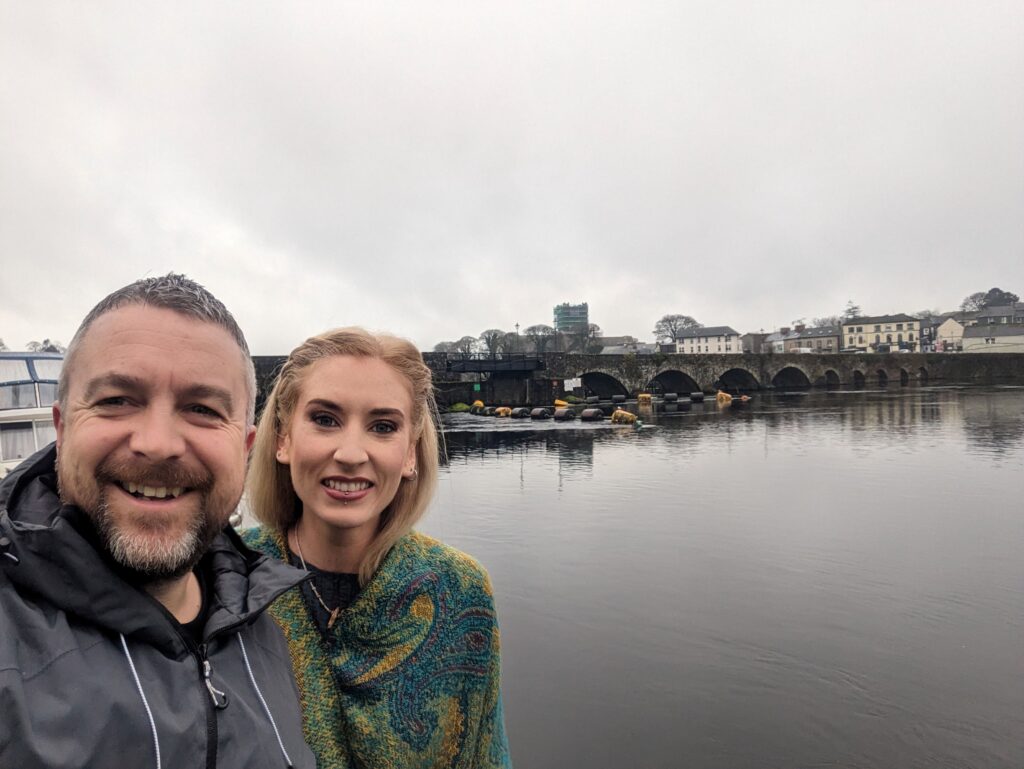
Killaloe was also the birthplace of Brian Ború – the great High King of Ireland, and is also known as the ancient capital of Ireland. The Heritage Centre is no longer open unfortunately but you can still visit the grounds and remains where once his ringfort stood.
37. Slieve Donard Mountain – County Down
Located in The Mourne Mountains and standing at 850 meters tall is Slieve Donard. This is the highest peak in the North of Ireland.
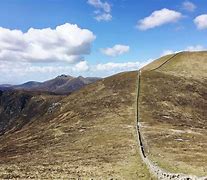
The peak is surrounded by great panoramic views, but it is the summit tower and Mourne wall that is the most impressive sight to see.
By handrailing the Mourne wall you will be guided right to the top of Slieve Donard.
38. Dursey Island – County Cork
The Beara Peninsula in County Cork is one of the most beautiful locations in Ireland.
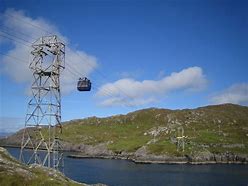
At the tip of Beara Peninsula, you will find Dursey Island. To get to the Island you can cross the sea by cable car.
This is Ireland’s only cable car and the only cable car that traverses open seawater in all of Europe.
39. Muckross Abbey – County Kerry
Only a 10-minute drive from Killarney is the impressive Muckross Abbey.
This Ireland landmark offers a bit more than the usual ruins of abbeys you will see scattered around Ireland, as inside the gothic courtyard you can see The Ancient Yew Tree.
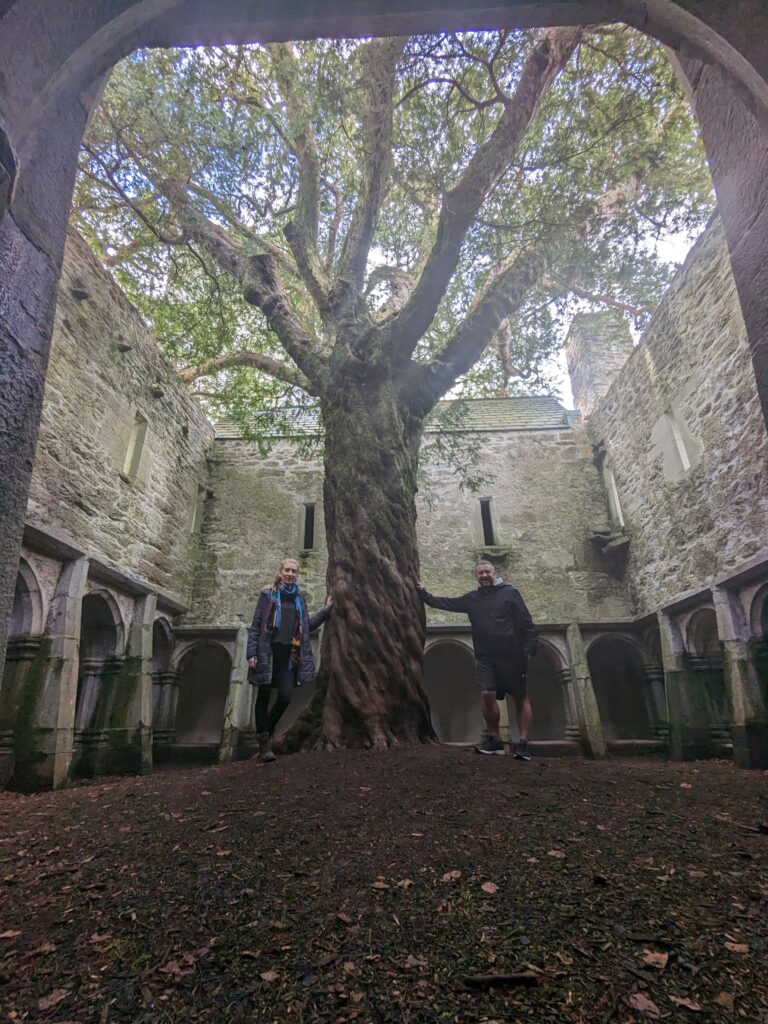
This ancient Yew tree is believed to be over 400 years old, with some experts even claiming 700 years old.
This gorgeous Ireland landmark is free to visit!
40. Blarney Castle – County Cork
Probably the most famous Ireland landmark, Blarney Castle in County Cork is known worldwide.
However, it is a certain stone that takes all the highlights from this gorgeous Irish castle – The Blarney Stone.
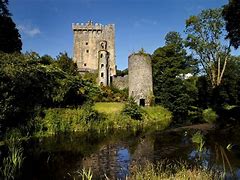
For over 200 years this block of grey limestone has been kissed by movie stars, musicians, American presidents, and world leaders.
The word blarney itself means “talk which aims to charm, flatter, or persuade” In other words, whoever kisses the stone will receive the gift of gab!
To kiss the stone first though you must climb up 120 steps and lay on your back whilst holding onto a steel bar. We hope you’re not afraid of heights!
- From Dublin, book your full-day Blarney tour.
- From Cork, book your Blarney Castle tour.
We do have a big BUT for this famous Ireland landmark…….
The entrance fee is 20 euro per person which we believe is way too overpriced and a tourist trap!!
For a family of 4 that is quite steep if you compare that price to the 10 Euro entrance fee for #26 Brú na Bóinne (which we rate extremely high!) or free entry such as #39 Muckross Abbey.
Enjoy All The Famous Ireland Landmarks!
How many of these Ireland landmarks have you visited and how many have you added to your bucket list?
Make sure to check out 41- 60 for some more Ireland landmarks.
We’d love to hear from you.
Feel free to leave a comment with your suggestions, or message us on our socials.
Slán go fóil


This post contains affiliate links. If you click on the links to make a purchase, we will earn a small commission. This is at NO EXTRA COST to you. This is a free way to support us and allow us to continue to create inspiring adventure travel guides.

